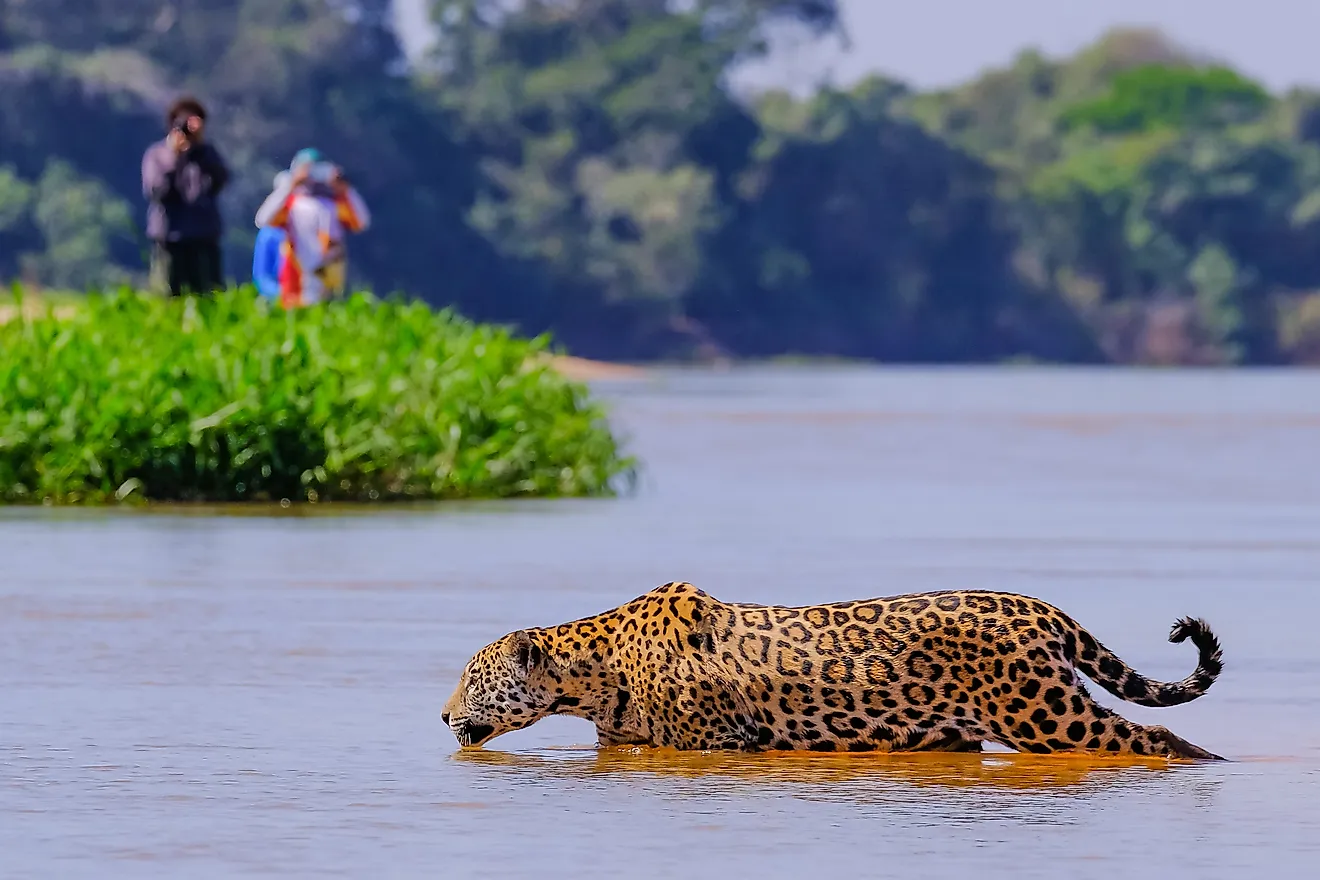Oldest Mountain Ranges Of The World
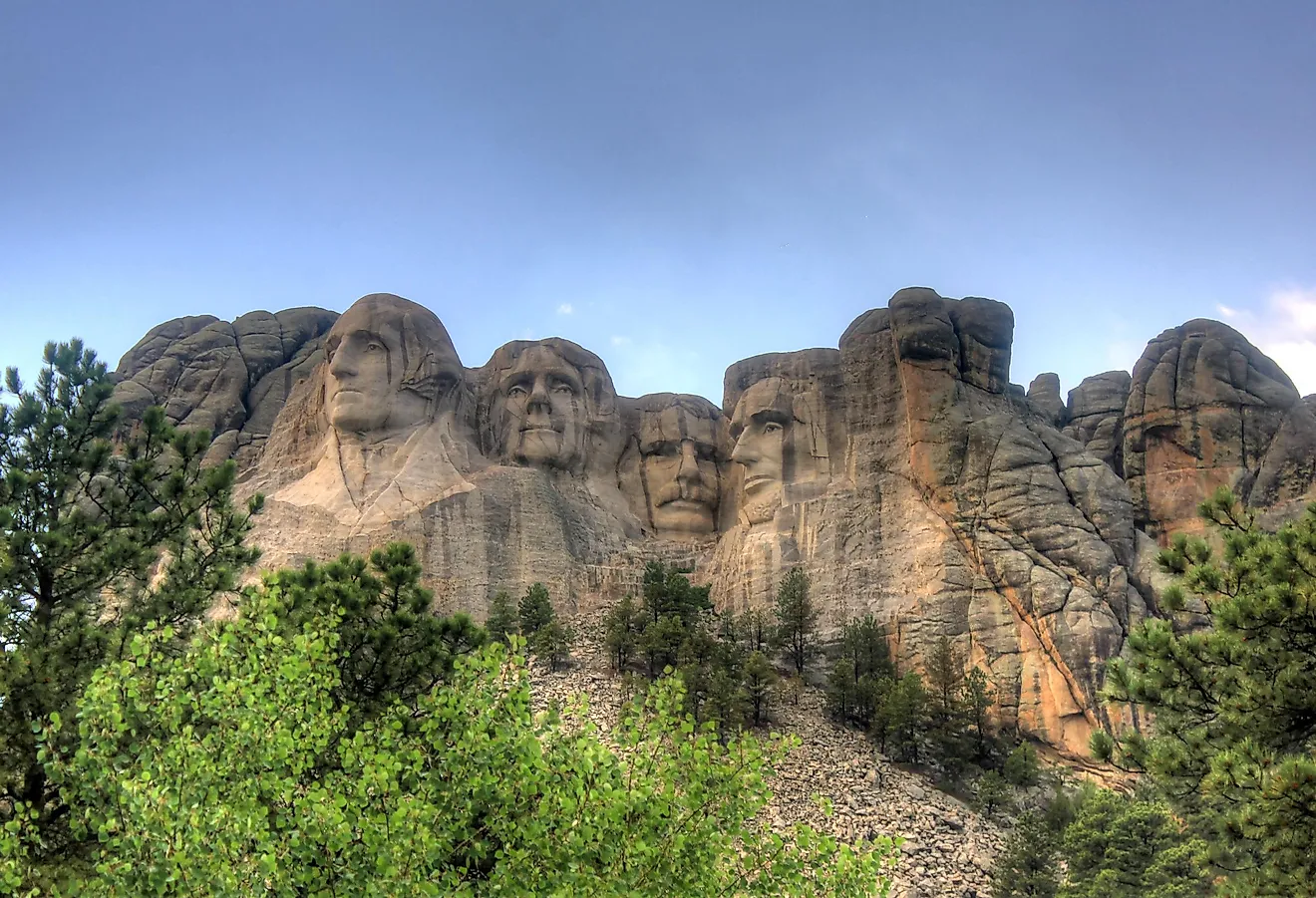
- The Barbertown Greenstone Belt in South Africa and the Hamersley Range in Australia two of the oldest mountain ranges in the world.
- Black Hills mountain range in the US is about 1.8 billion years old, and is home to Mount Rushmore, as well as sacred Native territories.
- Angel Falls, the world's highest waterfall is located in the Guiana Highlands, South America's oldest mountain range.
Mountains, like people, come in all shapes and sizes. These amazing formations of nature are important for us, as they give us fresh water and a place for plants, animals and humans alike to live.
It takes a very long time to form a mountain. Small volcanoes can grow up in just a few months, but a big mountain typically takes tens to hundreds of thousands of years to take shape.
Mountains appear when two parts of Earth’s crust called plates crash together. As National Geographic states, when the two plates meet, they buckle up like the hood of a car in a head-on collision.
Some of the youngest mountains on Earth are actually still “growing”. This includes the Himalayas in Asia. Scientists think these mountains formed about 40 million years ago, and while that doesn’t really sound too babyish, it is for a mountain! India is actually inching north towards Asia as you read this, and it may come as a surprise, but the Himalayas are currently still being pushed upwards by about 0.4 inches (1 cm) each year. These mountains are also being made smaller by erosion and weathering at the same time, however, and in the end, the Himalayas are not really changing in height, but that is not for “lack of action”.
Mountains are so gigantic they can actually influence weather patterns, and provide natural boundaries for countries. Here is a look at some of the oldest mountain ranges right now on Earth, and what is special about them.
The Barbertown Greenstone Belt 3.6 Billion Years
Generally speaking, South Africa and the Americas are home to some of the oldest mountain ranges on Earth. The Barbertown Greenstone Belt, or Makhonjwa Mountains is the very oldest mountain range in the world, and it is found in South Africa, rising to a maximum of some 5,905 ft (1,800 m) above sea level. (Remember, older mountains are shorter, as they are being worn down).
These mountains are full of ancient fossils, volcanic rock and, you got it, gold. The gold found in the Makhonjwa Mountains forms some of the oldest recognized orogenic gold deposits in the world.
The Hamersley Range 3.4 Billion Years
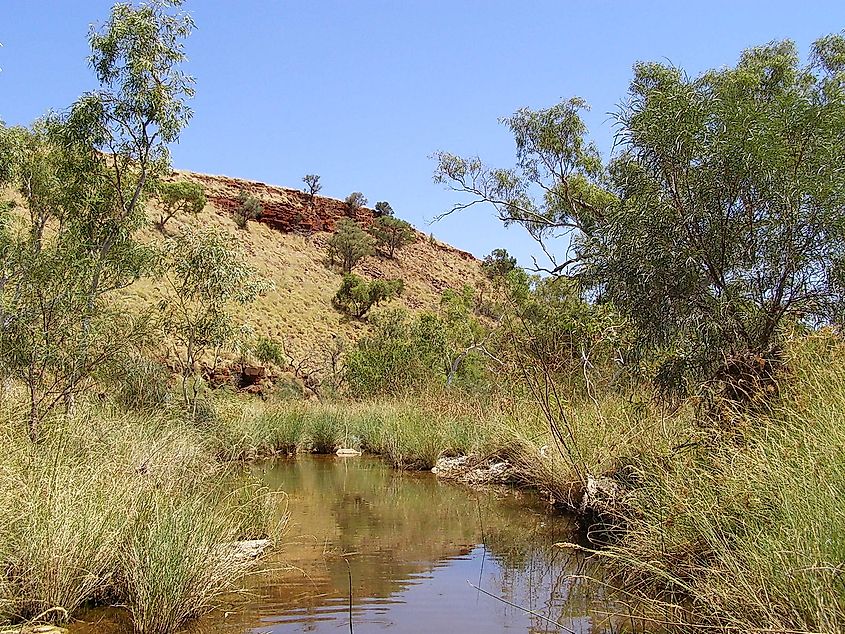
Have you ever wondered how some places get their names? A lot of it comes down to who discovered them in a way that put them on the map. The Hamersley Range of mountains in northwestern Australia fit this category. They may have been called something else by Australia’s native peoples long ago but when explorer and mineral surveyor Francis T. Gregory visited the area in 1861, the mountains were named for Edward Hamersley, someone who provided money that helped make Gregory’s ambitious expedition happen.
The Hamersley Range is rich in iron ore, and in the 1990s, it was the source of over 90% of Australia’s iron production. Gold is also found in these mountains in small amounts, as is asbestos and other minerals. The Hamersley mountain range is also home to Mount Meharry (4,111 feet [1,253 m]), which is Australia’s highest peak.
The Waterberg Mountains 2.7 Billion Years
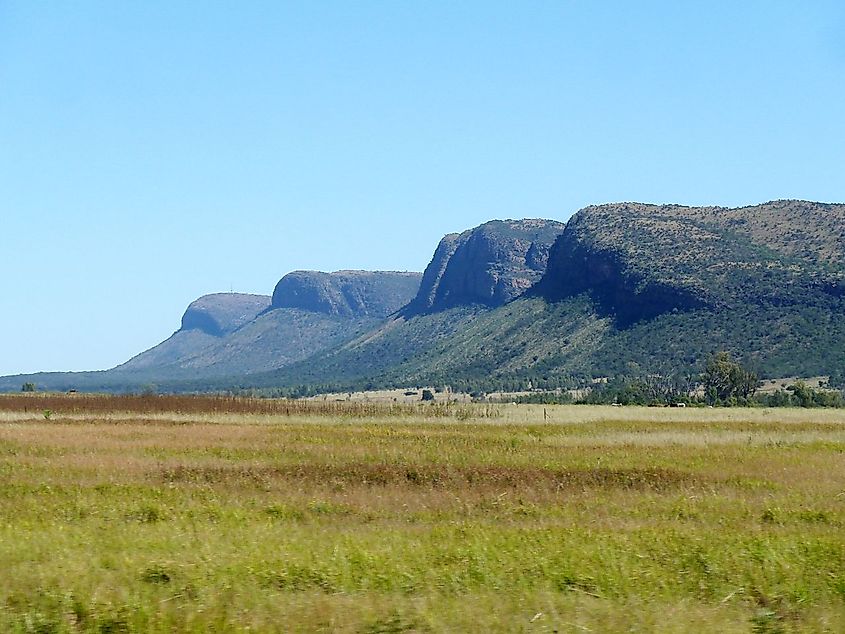
The Waterberg mountains of South Africa are low-lying peaks that sit in the Waterberg biosphere in North Limpopo Province, South Africa, one of 500 UNESCO biospheres in the world. This mountain range is about 150 km (93 miles) long, and is protected, as one of Africa’s two savannah biospheres. If you visit these mountains, you can see findings that date back to the Stone Age, including ancient cave art. You may also see findings related to the very origins of humans.
The Magaliesberg 2.3 Billion Years
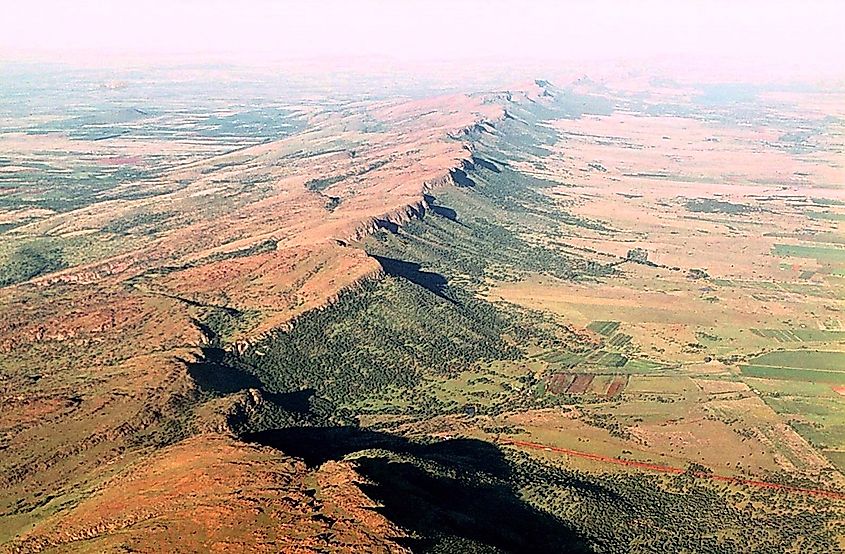
Africa is full of fascinating places to see. The Magaliesberg mountains are another one and they are also situated in a UNESCO biosphere, stretching for about 75 miles (120 km) from Bronkhorstspruit Dam east of Pretoria to Rustenburg. These mountains are full of quartzite and shale that formed when parts of this range were submerged under shallow water far long ago. This was when Africa was part of Gondawanaland, the southern half of Pangea, the Earth’s former supercontinent.
Today, large quartzite cliffs face south, and water running from inside the mountains comes in the form of splendid crystal clear waterfalls. This has created deep gullies that hikers love to climb, and to conserve for future generations to enjoy.
Guiana Highlands 2 Billion Years
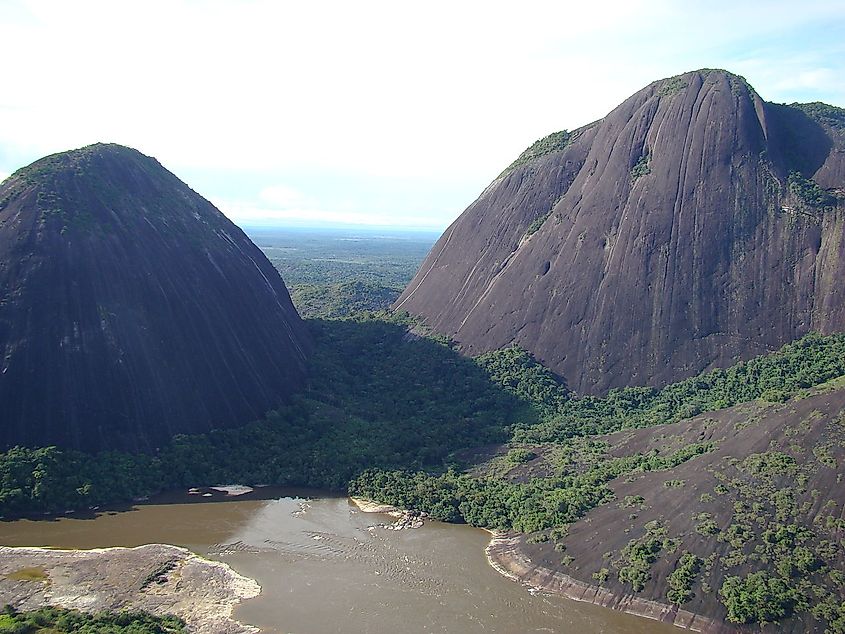
Found in North Eastern South America, the Guiana Highlands are located north of the Amazon rainforest, and south of the infamous Orinoco River. These mountains roll through the southern half of Venezuela. They also cover most of the Guianas, the northern part of Brazil, and part of southeastern Colombia. This range is made of plateaus capped with sandstone, low mountains of about 2,000 to 3,000 feet (600 to 900 metres) above sea level, and rolling hilly uplands. Savannas and tropical rainforests cover the sides of the Guiana Highlands. Here you can find all sorts of wonders. These include Angel Falls, the world’s highest waterfall, gold, diamonds, iron ore, crystalline rocks, minerals, insecticides, medicinal plants, vanilla, cabinet wood, and more. Magical.
Black Hills, USA. 1.8 Billion Years
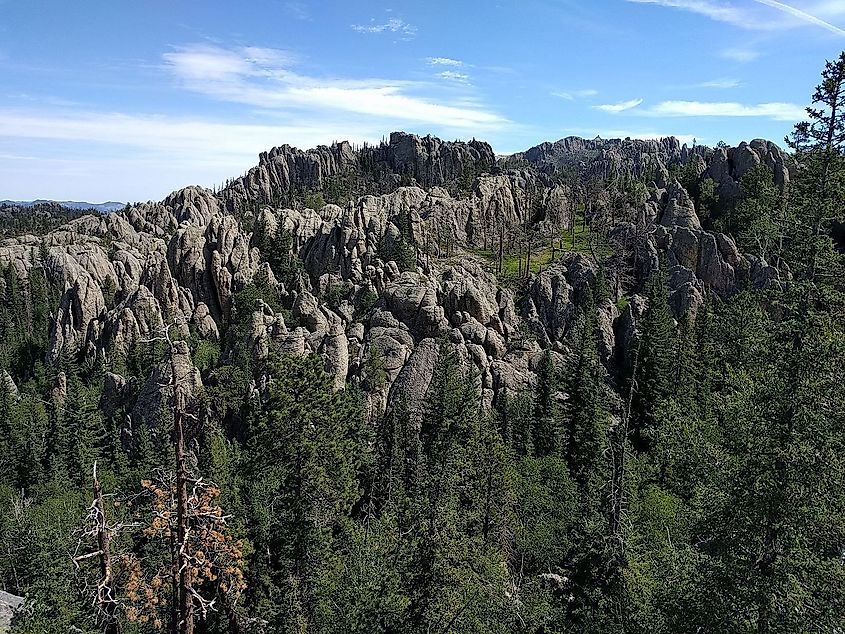
The Black Hills mountains are also fully of stories and history. This range is found in South Dakota and northeastern Wyoming in the US, and is home to the famous Mount Rushmore National Memorial. This is the art that depicts past presidents carved into massive stone cliffs.
The Black Hills were also the site of the largest gold mine in the US, which closed in 2002. This mine has a controversial past. The Black Hills, named for their dark appearance from far away, were a sacred hunting ground and territory for many Native American peoples including the Cheyenne, Kiowa, Crow, Arapaho, and Sioux. Rights to the land were granted to the Sioux and Arapaho people via treaty but when gold was discovered in the area in 1874 by a US military expedition, this changed everything. The Black Hills War erupted in 1876. The Native peoples were forced to fight for their traditional lands against Americans who wanted to get rich. Yes, the US military eventually won.
Today, you can visit many tourist attractions in the area including Jewel Cave National Monument, Wind Cave National Park, and Custer State Park in South Dakota, and Devil’s Tower National Monument in Wyoming.
